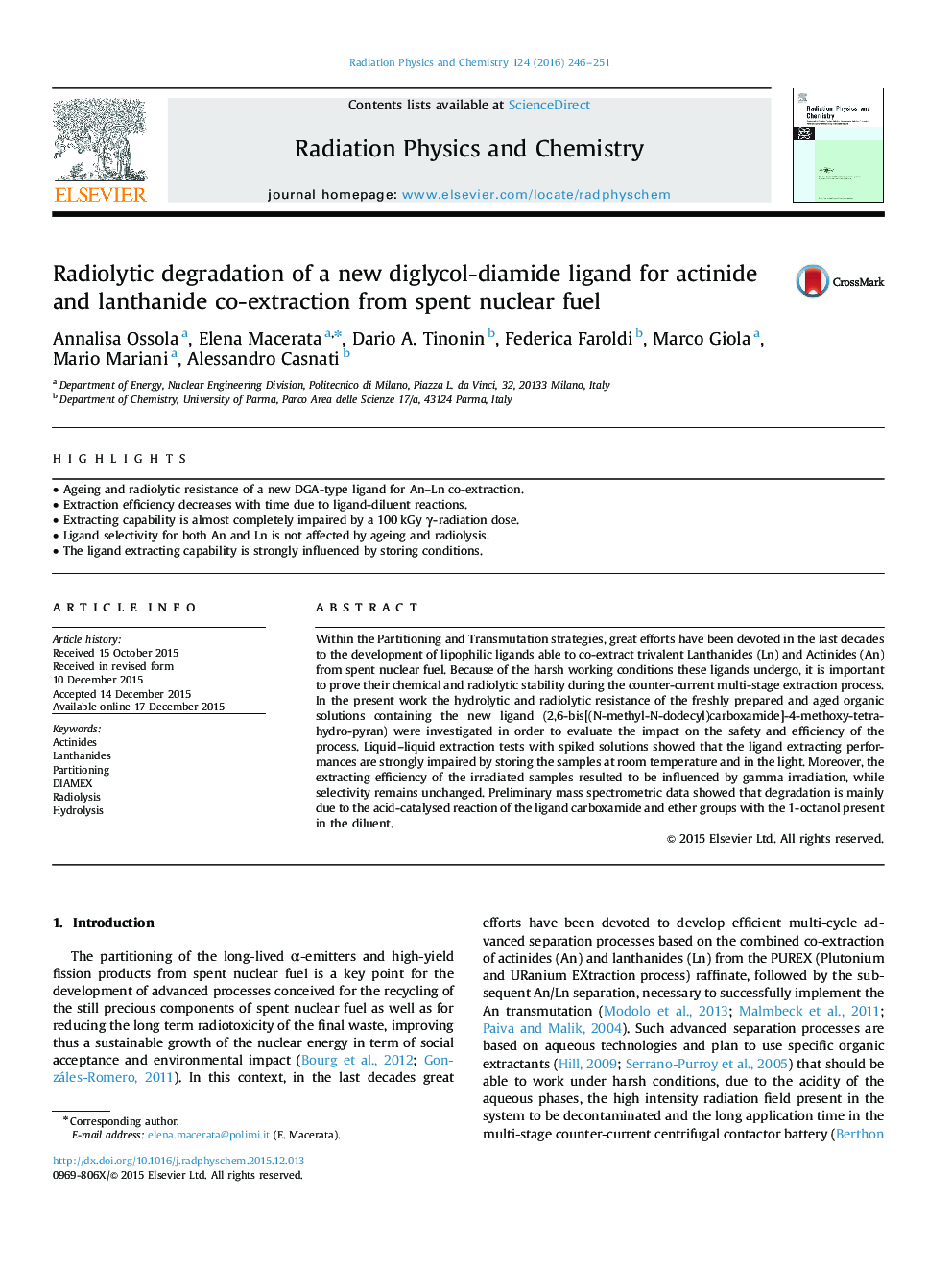| کد مقاله | کد نشریه | سال انتشار | مقاله انگلیسی | نسخه تمام متن |
|---|---|---|---|---|
| 1891052 | 1533500 | 2016 | 6 صفحه PDF | دانلود رایگان |
• Ageing and radiolytic resistance of a new DGA-type ligand for An–Ln co-extraction.
• Extraction efficiency decreases with time due to ligand-diluent reactions.
• Extracting capability is almost completely impaired by a 100 kGy γ-radiation dose.
• Ligand selectivity for both An and Ln is not affected by ageing and radiolysis.
• The ligand extracting capability is strongly influenced by storing conditions.
Within the Partitioning and Transmutation strategies, great efforts have been devoted in the last decades to the development of lipophilic ligands able to co-extract trivalent Lanthanides (Ln) and Actinides (An) from spent nuclear fuel. Because of the harsh working conditions these ligands undergo, it is important to prove their chemical and radiolytic stability during the counter-current multi-stage extraction process. In the present work the hydrolytic and radiolytic resistance of the freshly prepared and aged organic solutions containing the new ligand (2,6-bis[(N-methyl-N-dodecyl)carboxamide]-4-methoxy-tetrahydro-pyran) were investigated in order to evaluate the impact on the safety and efficiency of the process. Liquid–liquid extraction tests with spiked solutions showed that the ligand extracting performances are strongly impaired by storing the samples at room temperature and in the light. Moreover, the extracting efficiency of the irradiated samples resulted to be influenced by gamma irradiation, while selectivity remains unchanged. Preliminary mass spectrometric data showed that degradation is mainly due to the acid-catalysed reaction of the ligand carboxamide and ether groups with the 1-octanol present in the diluent.
Journal: Radiation Physics and Chemistry - Volume 124, July 2016, Pages 246–251
